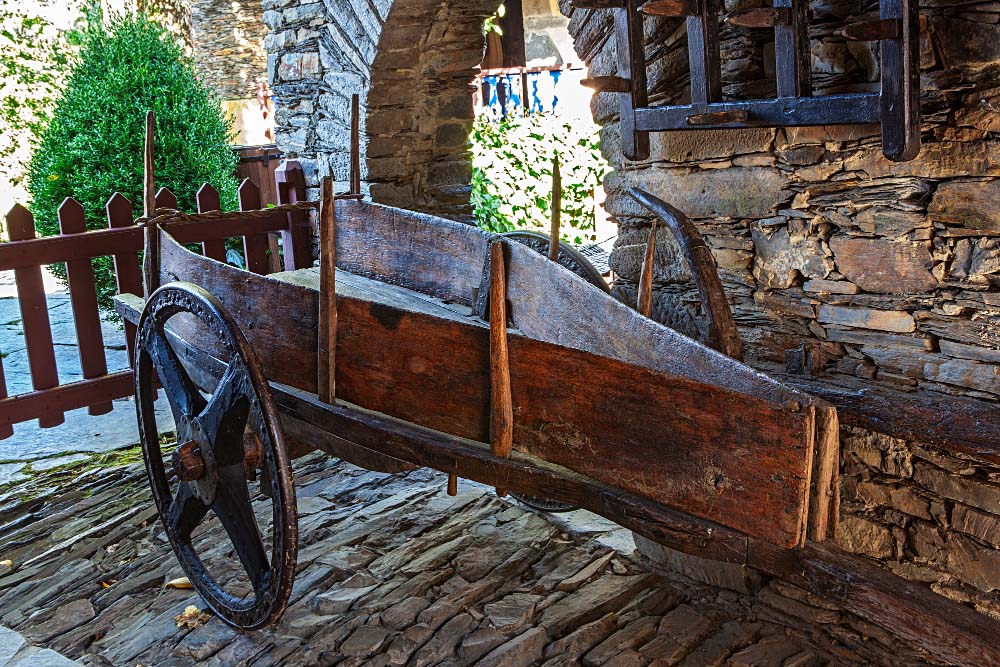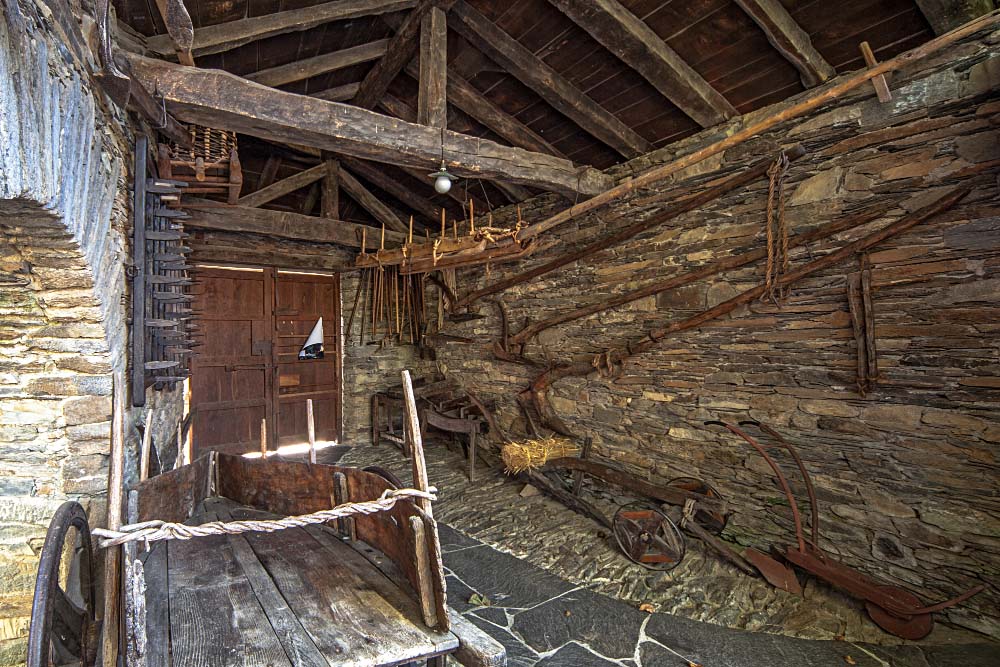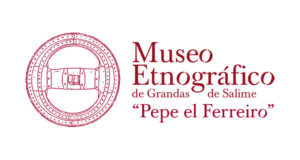The covered space is known as the cabanón and is accessed after passing through the Museum’s entrance. The lintel of the entrance door and the semicircular arch that opens up between the cabanón and the corridor come from the ruins of Salime, a village in the council that was submerged under the waters of the reservoir of the same name in 1953.
The cabanón sheltered the farming equipment from the elements, especially the draught implements that were pulled by cows or oxen. Among the exhibits on display is a country cart, an essential vehicle in peasant farming, used for transporting grass, manure and harvesting the crops. On the wagon you can see several grades (harrows), used to break up the clods of the crops.
With these elements is a selection of basic tools for sowing and mowing. Among them are gadañas (scythes) and angazos (wooden rakes) for mowing and collecting grass, picas del toxo to chop up the gorse that was given to the horses, and a repertoire of ploughs of different types: araos de pao (wooden ploughs) with and without lugs, ploughs with iron mouldboards or specific ploughs for opening up the land in the mountains and sowing wheat or rye, known as cambelas.



